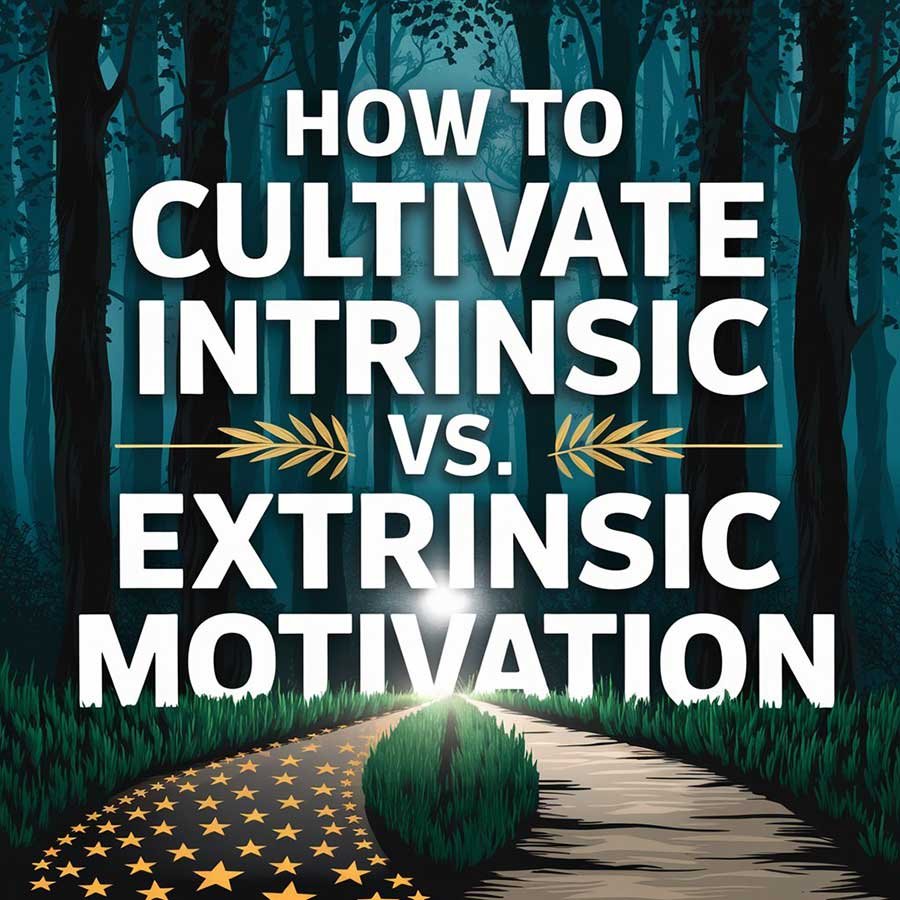
How to Cultivate Intrinsic vs. Extrinsic Motivation
Understanding Intrinsic and Extrinsic Motivation
Motivation is the driving force behind actions, behaviors, and achievements. It fuels productivity, persistence, and goal attainment. But not all motivation is the same.
Intrinsic Motivation
Intrinsic motivation comes from within. It is driven by personal satisfaction, curiosity, and a genuine interest in an activity rather than external rewards.
Examples of Intrinsic Motivation:
- Pursuing a hobby for enjoyment, not recognition.
- Learning a new skill because of genuine curiosity.
- Exercising for personal health rather than appearance.
- Reading a book because you love the topic.
Extrinsic Motivation
Extrinsic motivation, on the other hand, is driven by external rewards or avoiding negative consequences.
Examples of Extrinsic Motivation:
- Working hard for a promotion or bonus.
- Studying to get good grades.
- Exercising to look good for an event.
- Completing tasks to avoid punishment or criticism.
The Importance of Balancing Both
Both intrinsic and extrinsic motivation have their place. While intrinsic motivation fosters long-term commitment and enjoyment, extrinsic motivation can provide immediate incentives that help overcome procrastination. The key to success is learning how to cultivate both types to stay motivated in different areas of life.
Cultivating Intrinsic Motivation
1. Connect with Your Passions
Find what excites and interests you. Engaging in activities that align with your passions naturally enhances intrinsic motivation.
2. Focus on Personal Growth
View challenges as opportunities to grow rather than obstacles. When you focus on learning and self-improvement, motivation becomes more sustainable.
3. Set Meaningful Goals
Create goals that align with your values and aspirations. When goals are personally meaningful, they drive motivation from within.
4. Find Joy in the Process
Instead of focusing solely on outcomes, learn to appreciate the journey. Recognizing small wins and progress keeps motivation high.
5. Encourage Autonomy
When you have control over your tasks and decisions, you are more likely to stay engaged and motivated.
Cultivating Extrinsic Motivation
1. Use Rewards Effectively
While extrinsic motivation shouldn’t be the sole driver, rewards can boost motivation. Set up small incentives for completing challenging tasks.
2. Create Accountability
Having an accountability partner, mentor, or deadline can push you to stay on track even when motivation dips.
3. Break Tasks into Smaller Steps
Breaking large tasks into smaller, manageable actions makes them less overwhelming and more likely to get done.
4. Leverage Social Recognition
Sometimes, external validation, such as praise or recognition, can reinforce positive behavior and increase motivation.
5. Tie Tasks to External Obligations
Linking a task to an external commitment—such as a work deadline or a public challenge—can provide the push needed to follow through.
Finding the Right Balance
The best approach is to integrate both intrinsic and extrinsic motivation into your life. Here’s how:
- Start with extrinsic motivation: If you struggle to begin a task, use external rewards or deadlines.
- Transition to intrinsic motivation: Once you establish a routine, shift focus to personal enjoyment and self-growth.
- Eliminate dependency on rewards: Over time, reduce reliance on external rewards so that intrinsic motivation takes over.
Picture This
Imagine waking up every morning excited to pursue your goals—not because you have to, but because you genuinely want to. You find joy in learning, working, and improving yourself. Even on tough days, external motivation provides the push you need to keep going. Over time, your passion and discipline become second nature, leading to long-term success and fulfillment.
Share This with Someone Who Needs It
If this guide inspired you, share it with a friend or colleague who struggles with motivation. Let’s empower each other to cultivate a balance between intrinsic and extrinsic motivation!






